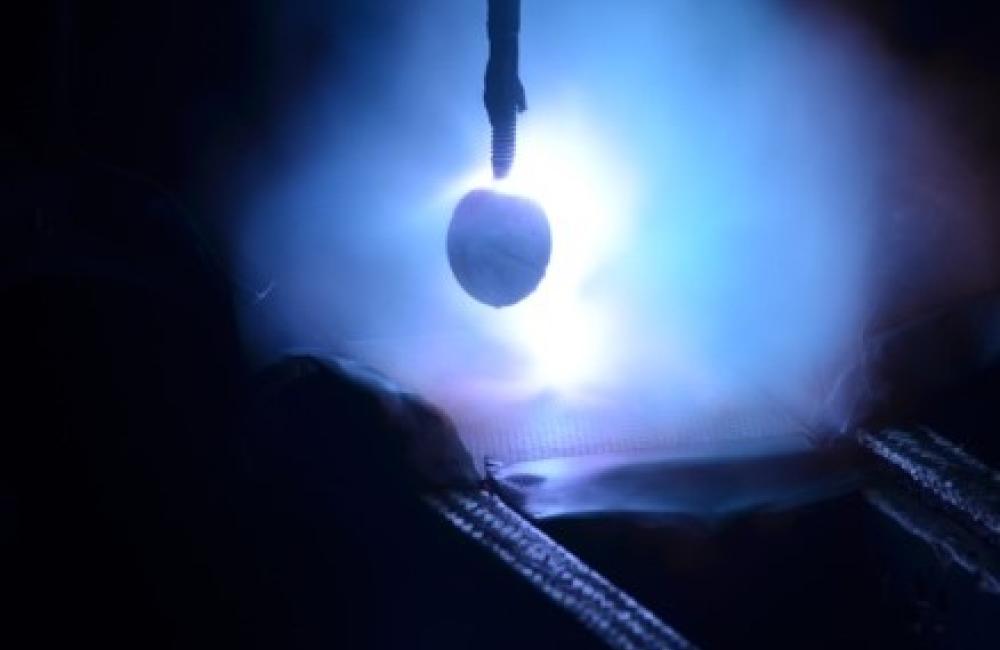Researchers conducted simulated lightning strike tests on additively manufactured polymeric material applied to carbon fiber reinforced plastic, or CFRP. The test revealed minimal damage to the polymer protected CFRP compared to the unprotected material. Credit: Vipin Kumar/Oak Ridge National Laboratory, U.S. Dept. of Energy
Researchers at Oak Ridge National Laboratory demonstrated that an additively manufactured polymer layer, when applied to carbon fiber reinforced plastic, or CFRP, can serve as an effective protector against aircraft lightning strikes. CFRP is usually used on an airplane’s exterior because it’s lighter than traditional metal. Although lightweight, CFRP has a drawback – low electrical conductivity and heat resistance, making it vulnerable to lightning strikes. “We printed a novel, easy to apply adhesive material for CFRP,” ORNL’s Vipin Kumar said. “The polymer’s chain-like structure makes the resulting material electrically conductive and structurally strong with thermal treatment.” In a study, the research team conducted simulated lightning strike tests on polymer protected CFRP versus unprotected. “The polymer-protected sample showed minimal damage upon visual inspection and enabled much more uniform heat dissipation,” Kumar said. “Our results proved that the polymer layer provided a continuous path to effectively distribute the lightning current.”




